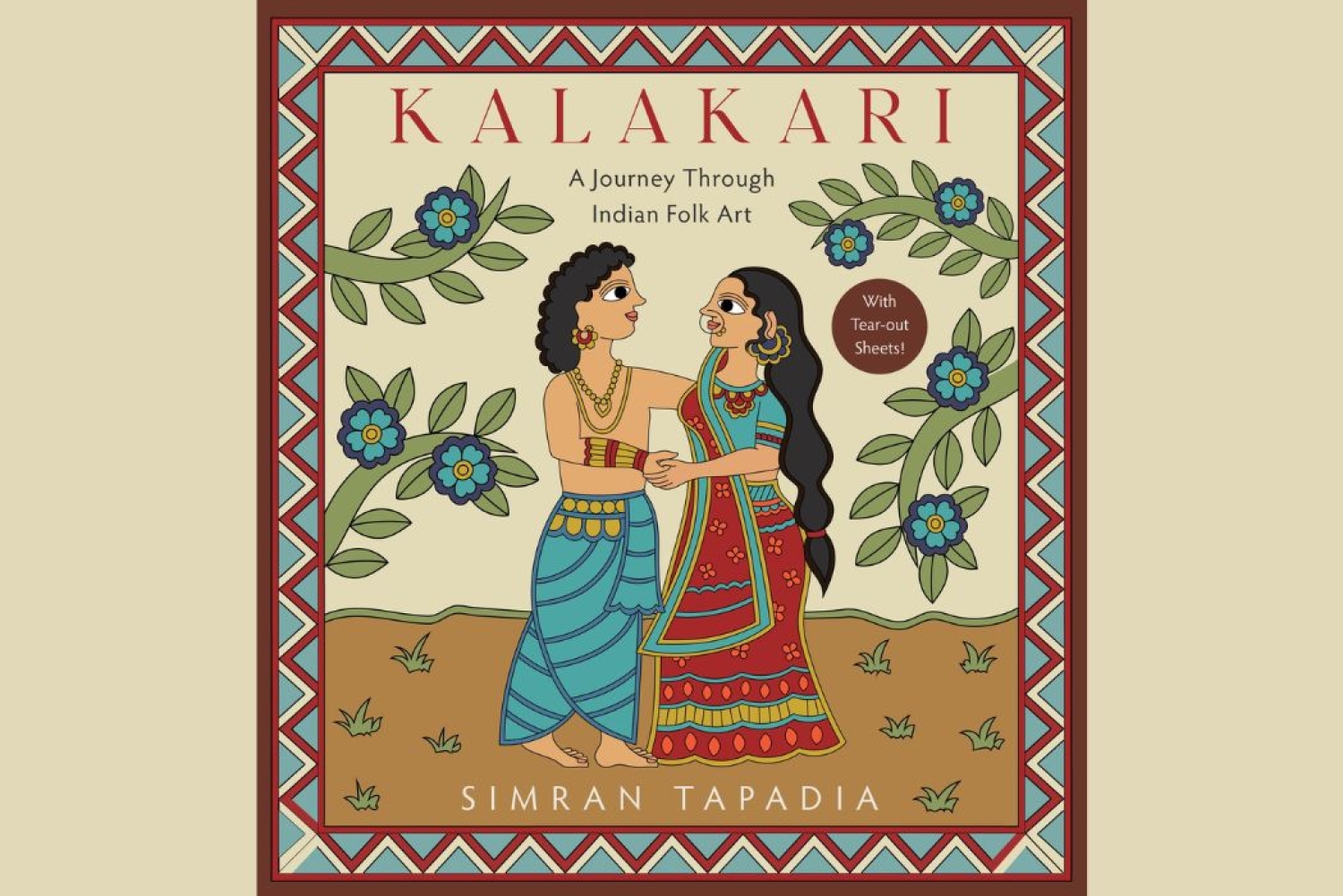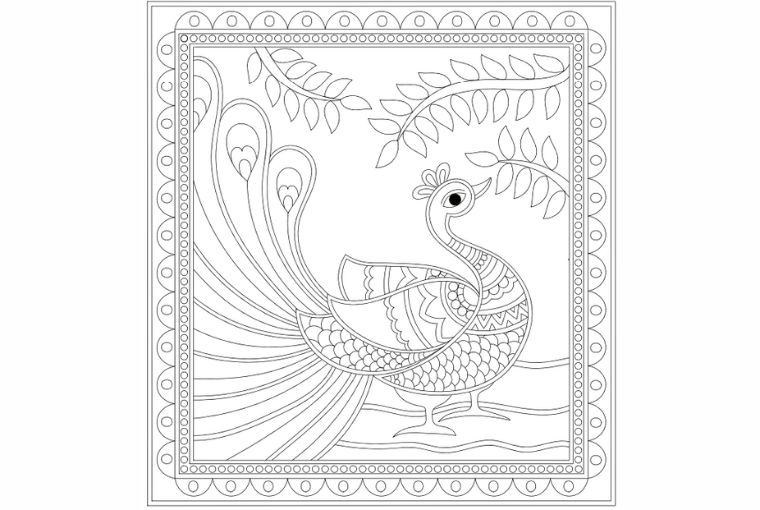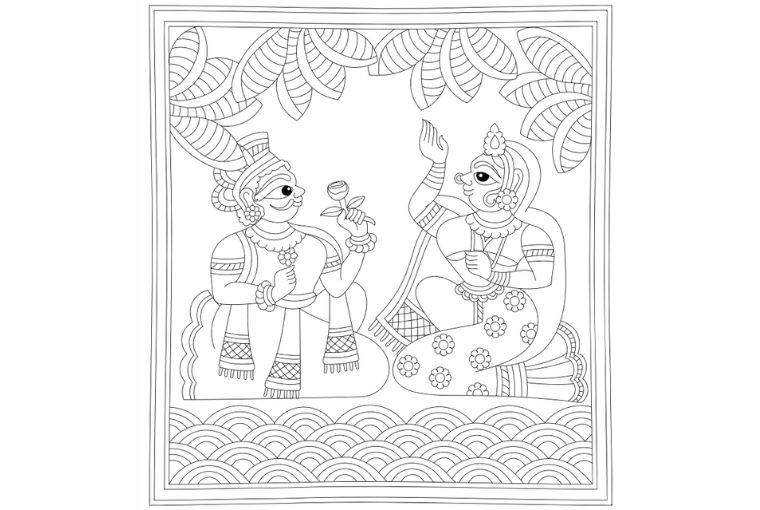

India’s rich folk tradition comes to life in the pages of Kalakari, a collection of illustrations by Simran Tapadia. Artisans, histories, icons and shapes from ancient histories and tales find a small place for themselves, tucked away in the pages of this book. The wonders of India’s cultural heritage are unleashed through Kerala Murals, Pattachitra, Madhubani, Kalamkari, Gond, Thangka, Phad and many more patterns. We’re in conversation with Simran to understand her motivations behind this project and her design sensibilities.
Relationship with Design
Design and I? It’s almost like we’ve been in a long term relationship all my life — equal parts romantic, chaotic, and ever-evolving. For me, design is storytelling. It’s how I make sense of the world; one motif, one memory, one magical line at a time. I see it in everyday details; in a fading rangoli, an old textile, or even the way sunlight hits a wall. It’s intuitive, emotional, and also a bit nerdy. I love digging deep and then translating that into something visual.
Love for Indian Folk Art
Kalakari was born out of love for Indian folk art and a deep need for mindful creativity. I began this endeavour in 2018 with the idea of making folk art more approachable, and thought to myself, what if people could interact with this kind of art instead of just scrolling past it on social media or seeing it in museums? The book also invites readers to colour within the lines, and that felt perfect — it makes you slow down, really look at the details, and maybe even connect with a bit of history without realizing it. Additionally, I wanted the younger generation to experience these forms as something more than old-school art, and to think of them as living, breathing traditions that still resonate with us.

Slow & Intentional Process
The research rabbit hole was deep and delightful! It was part detective work, part emotional rollercoaster. I spent time with old books, visited textile museums, and poured over photo archives. I also learned a lot through my travels over the years to Patna, Jaipur, Kerala — soaking in the art on temple walls, clothing, and homes. I spoke to a few artisans, too, which completely shifted my perspective.
The book features styles like Madhubani, Gond, Pattachitra, Kalighat, Cheriyal and more — each with its own story. I didn’t want to copy-paste them; I wanted to collaborate with them. The process was slow and intentional: sketching, absorbing palettes, imagining how someone might colour them in. And you’ll spot lots of animals and couples in motion — because that’s how our folk art tells stories: full of life, full of action.
Reviving traditional styles
Folk art feels like home. I grew up around stories, through festivals, rituals, fabrics, and over time, those visuals became part of how I saw the world. During college, I became much more serious about it. I started learning about different folk styles, and I thought to myself, why don’t more people know how rich, wild, and wonderful this is?
Now, I try to bring these traditional forms into a more current context — for example, I recently did a Zodiac sign series in Indian folk art. It’s not about modernizing the art, but reminding people that it still belongs and that it’s still cool, you know?
What's Next
Right now, I’m juggling a bunch of exciting projects! I'm illustrating multiple children’s books and working on a personal series called Memories, which is close to my heart. And yes — there’s another book idea bubbling…I can’t say too much yet, but fingers crossed. For now, I’m just thrilled about Kal?kari reaching more people — and hopefully sparking a little love for Indian folk art across the world. Let’s go global, but stay rooted!
Words Neeraja Srinivasan
15.07.2025

